Wednesday, 28 December 2016
Sunday, 18 December 2016
Evaluation - Question 4 (David McConnell)
How did you use new media technologies in the construction and research, planning and evaluation stages?
https://prezi.com/qisaphvuazrp/present/?auth_key=of4adjd&follow=9btcvllwjlr0
(Use link if embed presentation isn't working)
Have the sound turned on
https://prezi.com/qisaphvuazrp/present/?auth_key=of4adjd&follow=9btcvllwjlr0
(Use link if embed presentation isn't working)
Have the sound turned on
Evaluation - Question 4 (James Presland)
How did you use new media technologies in the construction and research, planning and evaluation stages?
Construction In terms of the production process, My group and I used the Canon DSLR E05 650D camera and the Nikon D7000 DSLR to film footage for the music video and to also take stills for the Digipak.
Using these two cameras allowed me to immerse in the role as a director and cinematographer. The 4k capability of the Nikon D7000 allowed me to capture high-resolution stills and film, however, unfortunately, we could not upload any video to youtube in 4k quality. I explored the construction of each frame while filming. I experimented with the use of positioning of different shots.
While we were filming and creating this camera my group and I made sure to keep in mind what our aim and intention for this project was to create a convincing and realistic media text. By experimenting and exploring different filming and editing techniques, I strengthened the cinematography and overall look of my media text by transforming my scenes into more stylish and professional scenes.

We were already fairly familiar with the Canon DSLR EOS 650D as we used this for our preliminary tasks in both year 13 and 12 and also my group's thriller trailer in year 12. We could also use this camera to gain a second angle shot along with the Nikon D7000. This also provided us with another SD card which we could use as a backup filming camera.
However, one disadvantage of using the Canon DLSR EOS 650D is that the battery life was fairly weak and needed to have a spare battery carried around with it when we went on filming sessions. This meant that we had to choose when to film specific shots instead filming rough cuts and rehearsal shots. The other issue with this camera was the fact that the Quality of the picture was not as good as the Nikon D7000.
In terms of pre-production research and post-production editing, My group and I used a wide range of websites and software such as Blogger, Final Cut Pro, Adobe Photoshop, iMac computers, Youtube.
Blogger
 Blogger is an online blog website. I used Blogger to document my research and planning of my music video and the filming of the music video. An advantage to Blogger is that we had also used it last year so the group was familiar with the layout of the site and how to tag each other in posts and who to upload posts. In addition, the embedding of videos, gifs and pictures function enables you to assist your text with examples with ease of use. A disadvantage to Blogger is that sometimes the format on the website can glitch and become disjointed, this requires you to edit and fix your post. Moreover, on occasions, Blogger may crash and all of your work may be lost.
Blogger is an online blog website. I used Blogger to document my research and planning of my music video and the filming of the music video. An advantage to Blogger is that we had also used it last year so the group was familiar with the layout of the site and how to tag each other in posts and who to upload posts. In addition, the embedding of videos, gifs and pictures function enables you to assist your text with examples with ease of use. A disadvantage to Blogger is that sometimes the format on the website can glitch and become disjointed, this requires you to edit and fix your post. Moreover, on occasions, Blogger may crash and all of your work may be lost.Youtube
 Youtube is a content sharing website that is free to use. My group and I used Youtube a lot during both our Year 12 Thriller trailer media project and also our Year 13 Music Video media project. An advantage to using Youtube is that we can receive feedback from people that we do not know. We also used Youtube to search for our song that we used in our music video. Youtube's message function and description space for contact information allowed us to contact Cadence Kid the creator of our song and enabled us to request if we could use his song in our project.
Youtube is a content sharing website that is free to use. My group and I used Youtube a lot during both our Year 12 Thriller trailer media project and also our Year 13 Music Video media project. An advantage to using Youtube is that we can receive feedback from people that we do not know. We also used Youtube to search for our song that we used in our music video. Youtube's message function and description space for contact information allowed us to contact Cadence Kid the creator of our song and enabled us to request if we could use his song in our project.However, when uploading content to Youtube and viewing large content files the website can temporarily crash and take an extended period of time to load the video and buffer.
Prezi
 Prezi is an internet based program that is similar to Microsoft Powerpoint. Prezi enables you to present your production blog information in a unique and interesting fashion. An advantage to Prezi is that the website based program updates and saves your work every few seconds, so unlike Blogger your work is safe even if your internet crashes or computer crashes. In addition, when the Prezi presentation is complete, the embedding function on Blogger is extremely compatible with Prezi allowing you to enter the Prezi URL and for the presentation to display itself in a user-friendly way. However, the navigation for the user while viewing the information on the slides may be unpleasant and confusing as Prezi works by zooming in and out from larger bubbles to smaller bubbles representing topics and sub-topics.
Prezi is an internet based program that is similar to Microsoft Powerpoint. Prezi enables you to present your production blog information in a unique and interesting fashion. An advantage to Prezi is that the website based program updates and saves your work every few seconds, so unlike Blogger your work is safe even if your internet crashes or computer crashes. In addition, when the Prezi presentation is complete, the embedding function on Blogger is extremely compatible with Prezi allowing you to enter the Prezi URL and for the presentation to display itself in a user-friendly way. However, the navigation for the user while viewing the information on the slides may be unpleasant and confusing as Prezi works by zooming in and out from larger bubbles to smaller bubbles representing topics and sub-topics.iMac Computers
 The iMac computer was the computer that we used to edit and process all our footage and stills for our Digipak. One advantage of the iMacs was they were located inside the Media rooms this meant that my group and I could access. The iMac computers are very easy to use and most of our group was familiar with them already. The iMacs also have a very highly powered processing unit which came into good use when editing as the Final Cut Pro editing software was already on the iMacs. However, On rare occasions, the power could cut out causing us to lose unsaved work.
The iMac computer was the computer that we used to edit and process all our footage and stills for our Digipak. One advantage of the iMacs was they were located inside the Media rooms this meant that my group and I could access. The iMac computers are very easy to use and most of our group was familiar with them already. The iMacs also have a very highly powered processing unit which came into good use when editing as the Final Cut Pro editing software was already on the iMacs. However, On rare occasions, the power could cut out causing us to lose unsaved work.Adobe Photoshop
 Adobe Photoshop is a photo editing software that we used in year 12 to create icons for production logos and in Year 13 to create stills for our Digipak. The software was surprisingly easy to use and created professional results. We edited the images for our magazine advert and Digipak on photoshop as it kept the 4K quality from the Nikon D7000.
Adobe Photoshop is a photo editing software that we used in year 12 to create icons for production logos and in Year 13 to create stills for our Digipak. The software was surprisingly easy to use and created professional results. We edited the images for our magazine advert and Digipak on photoshop as it kept the 4K quality from the Nikon D7000.Photoshop also enabled us to position and crop our still images in order to form our Digipak.
Final Cut Pro
 Final Cut Pro is the main editing software that we used to edit our music video with. Final Cut Pro was easy to use and our group was already familiar with many functions such as stabilisation, composition and cropping clips because of our experience with editing last year's Thriller trailer.
Final Cut Pro is the main editing software that we used to edit our music video with. Final Cut Pro was easy to use and our group was already familiar with many functions such as stabilisation, composition and cropping clips because of our experience with editing last year's Thriller trailer.During the Preliminary 'Budget Britney' task we learnt how to silence and remove the audio from the footage used and replace and synchronise it with the audio from the actual song that we were creating a music video for, we did this in order to create synergy within the video and also because most Pop song videos have the artist lip singing. However, due to poor lip singing, we were unable to exactly synchronise both the audio and visuals, this was also heard in feedback.

While experimenting with music video conventions during our preliminary task we used a green screen and edited the footage using chroma key on Final Cut Pro. However, we found that during the storyboarding of the music video we did not need to use a green screen as it would not fit the style of music and our location for filming was accessible for us. However, we did add effects such as birds singing and the rustling of leaves as it offered a feeling of verisimilitude near to the end. We also learnt how to edit the visual to the music, this involves making jump cuts during climaxes in the music and matching the mellow and sombre mood of the music with the calm visuals.
Problems we encountered
Problem 1: The lights we were using to shoot the actor by the river were too bright and could be seen on the actor's clothes. We found a solution to this by adding a light filter to make the light less powerful and bright. This light then acted as a backlight in our three key lighting.
Problem 2: A large part of our footage of the protagonist walking through central London was not filmed on a camera dolly so it made the footage shaky and unpleasant to view. In order to solve this we used the stabilisation tool on Final Cut Pro, this tool goes frame by frame through a selected clip of video and realigns the image to make the visuals easier to view.
Problem 3: Some of the clips placed at the start of the music video were not aligning with the music in time and this meant the whole music video and lip singing was out of time. We solved this by cropping clips into smaller sections, this lead to more flexibility in where I could place the clips and changed the flow of the video.
Evaluation - Question 4 (Osbert Menezes)
How did you use new media technologies in the construction and research, planning and evaluation stages?
Evaluation - Question 4 (Kyle Quadra)
How did you use new media technologies in the construction and research, planning and evaluation stages?
Saturday, 17 December 2016
Friday, 16 December 2016
Evaluation - Question 2 (David McConnell)
How effective is your combination of your main product and ancillary texts?
All three products contain the same image of the protagonist walking through St James' Park. This scene was used as it shows how the protagonist is going on a journey, as he remembers his date. In the digipak and advert it is identical, while in the music video, there is the scene from where we got the image from. We did this to create continuity between the three products, and it was effective as we received lots of feedback that people liked it, it was 'unique' and was very effective.
When picking a font, we knew that it would have to work on a black background as we had decided where we were going to place it in the music video. Therefore we chose a simple, clean white font that stood out against the backdrop. This type of font is very popular with many YouTube vloggers as it can be easily read on a small screen, such as an iPhone. Using the same font throughout all 3 products meant we had another synergistic link. We decided to have the artist's name in a smaller font size as we felt the song is the important element we are trying to sell, not the artist.
In all 3 products, we used the same actor to play the protagonist. This was done as he plays a key role in the music video and so if someone had seen the video on the internet, and then while out in town had seen the advert or the digipak, could make a clear connection and investigate further. Having our protagonist wear smart yet casual clothes would create a character that the majority of teens today, the largest age group that listen to indie music, can relate to.
Other examples
Arctic Monkeys - 'AM'
Our 3 products are the...
- Promotional Music Video
- Digipak
- Magazine advert
I believe we were successful in creating 3 products that effectively combined to create a promotional package for the release of the album/song. This is because all 3 are similar and yet work at an individual level. Moreover, when putting all 3 together, there are clear connections between them. This was because we listened closely to audience research and made sure that all 3 have synergistic links.
The synergistic links
- The image
 |
| Music video screenshot |
 |
| The outer cover for the digipak |
 |
| The poster |
All three products contain the same image of the protagonist walking through St James' Park. This scene was used as it shows how the protagonist is going on a journey, as he remembers his date. In the digipak and advert it is identical, while in the music video, there is the scene from where we got the image from. We did this to create continuity between the three products, and it was effective as we received lots of feedback that people liked it, it was 'unique' and was very effective.
- The text
 |
| The opening shot from the music video |
 |
| The text on the front cover |
 |
| The text on the poster |
When picking a font, we knew that it would have to work on a black background as we had decided where we were going to place it in the music video. Therefore we chose a simple, clean white font that stood out against the backdrop. This type of font is very popular with many YouTube vloggers as it can be easily read on a small screen, such as an iPhone. Using the same font throughout all 3 products meant we had another synergistic link. We decided to have the artist's name in a smaller font size as we felt the song is the important element we are trying to sell, not the artist.
- The actor
 |
| Our protagonist |
In all 3 products, we used the same actor to play the protagonist. This was done as he plays a key role in the music video and so if someone had seen the video on the internet, and then while out in town had seen the advert or the digipak, could make a clear connection and investigate further. Having our protagonist wear smart yet casual clothes would create a character that the majority of teens today, the largest age group that listen to indie music, can relate to.
- Other factors
- We used the same colour scheme as we didn't want to edit a raw date. The story is meant to be very realistic and having scenes that are too heavily edited would ruin this illusion. Therefore we stuck with the grey skyline and the dull colours, like the grey the protagonist is wearing.
- The simple editing mirrors the simpleness of the indie genre and how lots of the songs are just a singer and a guitar. An audience would see the simple digipak and cover, and if they were a fan of the indie genre, would pick up the song.
Other examples
Adele - '21'
 |
| Digipak |
 |
| Advert |
Arctic Monkeys - 'AM'
Evaluation - Question 2 (James Presland)
How effective is your combination of your main product and ancillary texts?
Evaluation - Question 2 (Osbert Menezes)
How effective is the combination of your main product and ancillary texts?
Evaluation - Question 2 (Kyle Quadra)
How effective is the combination of your main product and ancillary texts?
Thursday, 15 December 2016
Evaluation - Question 1 (James Presland)
In what ways does your media products use, develop or challenge forms and conventions of real media products?
Evaluation - Question 1 (Osbert Menezes)
In what ways does your media product use, develop or challenge forms and conventions of real media products?
The Music Video
Uses of music industry forms and conventions
- The title of the song as well as the artist name is a convention used in many music videos that come out today. For example the beginning of recent songs like "24K Magic" by Bruno Mars, "Million Reasons" by Lady Gaga and "Let Me Love You" by DJ Snake ft. Justin Bieber show this. All these songs use this part of the song to show the title as well the the artists to give the audience information about the music.
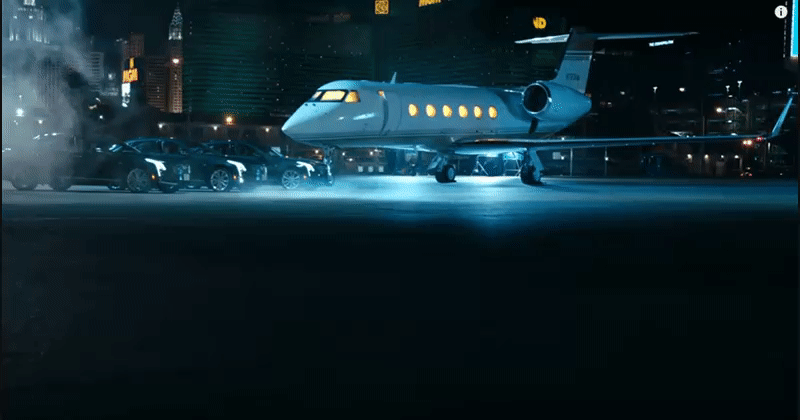
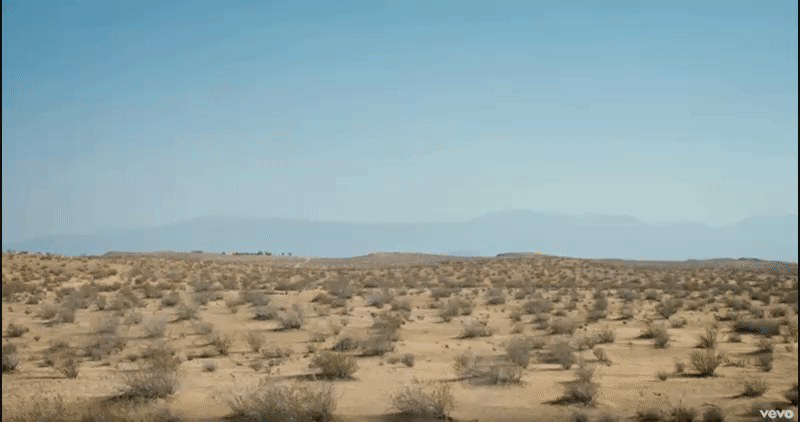

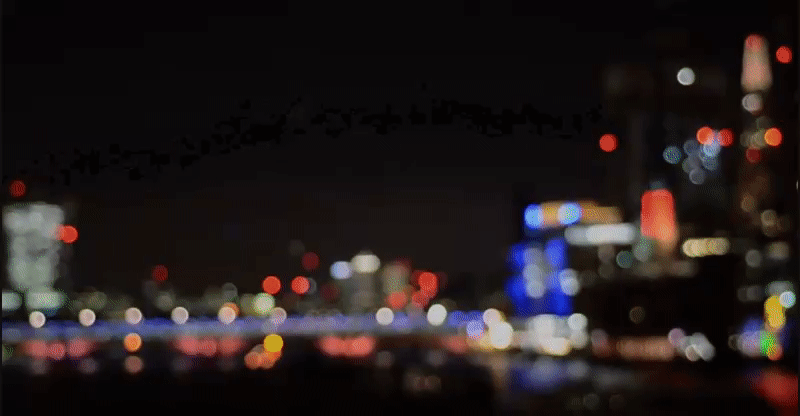
- There is a link between the visuals from the video and the music. For example there are scenes where the character int he video is singing the lyrics as they are heard. This creates a link between the video and music.
- Similarly the artist was featured in the music which is used in most music videos.

- In terms of the story portrayed in the song, a love story is used which is something used in much of today's music. most music is based on love stories looking at its good or bad sides. our one happened to focus on the good and this optimist view on love seen in many songs in today's music, for example "Closer" by The Chainsmokers and "Just The Way You Are" by Bruno Mars.
Uses of indie genre forms and conventions
- Use of bright vibrant colour contrasts to create a high state for the viewer which is a convention used in a lot of indie music videos to look trippy and confusing. For example "Let It Happen" by Tame Impala uses very bright contrasting background colours to make certain aspects of the frame stand out and use visual effects along side this to create the trippy effect.

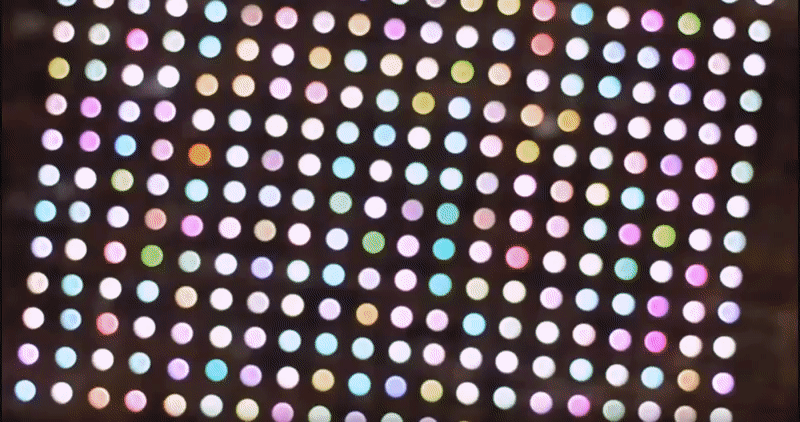
- Scenic shots are something that are used a lot in indie music videos and so we tried to incorporate this into our video as well through multiple shots of London. Shots like this can be seen in videos like "I Bet My Life" by Imagine Dragons and "Pompeii" by Bastille.
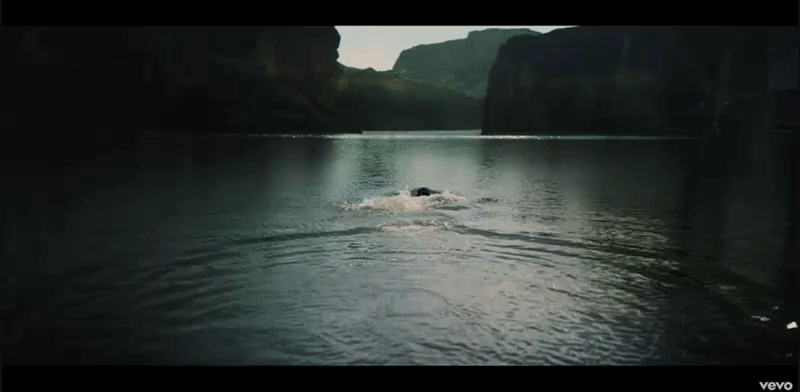
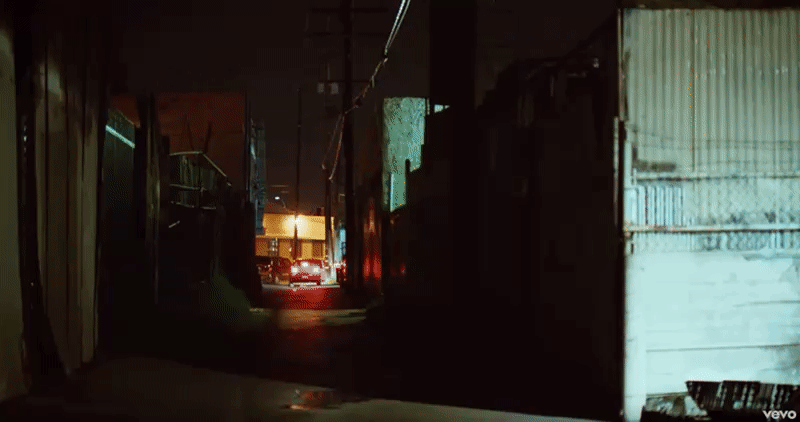

Challenges of music industry forms and conventions
- One convention we did not include was the idea of seeing instruments playing in scenes which we chose not to use as we felt it would detach from the story although it being something used in many videos.
- Costumes in music videos of the artist in particular tend to be very flashy and vibrant but we also chose not to stick to this and chose for a more simple casual look to give it the video the indie genre feel we were looking for.
- Lots of music videos tend to film using camera dollies and panning equipment but we went for a more hand held option to make it look more indie and realistic rather than very cinematic.
Challenges of indie genre forms and conventions
- Many indie music videos tend to include the artist or a band playing instruments in scenes but we did not include this for mainly practical reasons as the actor we had playing the artist was unable to play instruments to make it seem believable so we preferred to keep this out of the video.
 The Digipak
The Digipak
Uses of digipak forms and conventions

- One way we conformed to the forms of digipaks was through the amount of panels we had. Most digipaks tend to have 4 panels with additional panels from little pullouts our booklets that come inside. This is why we went for a similar idea and did the same by having 4 panels and a pullout. An example of a digipak that uses 4 panels include "Viva La Vida" by Coldplay,
- The design used on many fronts for digipaks tends to be quite artistic. We did this by creating the effect of the past shadows from one of the scenes from the music video. This can been seen in covers such as "Currents" by Tame Impala and "Badlands" by Halsey. This helped us to create synergy between the two products while still making the digipak seem different as it included the effect which was not in the music video.


Challenges of digipak forms and conventions
- A way we challenged the conventions of traditional digipaks was through the way we incorporated the front and back panels as part of the same image. This is not something that is done in digipaks and the front and back panels tend to be completely separate images, however we still chose to challenge this as we felt it looked better this way.
The Magazine Advert
Uses of magazine advert forms and conventions
- Many posters tend to include a link to where the music can be accessed or purchased so the audience can know when they can get hold of the music from. This can be seen on posters such as "21" by Adele in which information on where the album is available is displayed on the poster. in a similar way this information is displayed on our advert poster by the "Google Play Store" and "Apple Store" logos.


- Reviews and ratings is also an aspect used in a number of magazine advert posters quite a bit so we chose to include this within ours too. For example the poster for "Death Magnetic" by Metallica uses this to sell to the audience with great reviews and critical feedback.
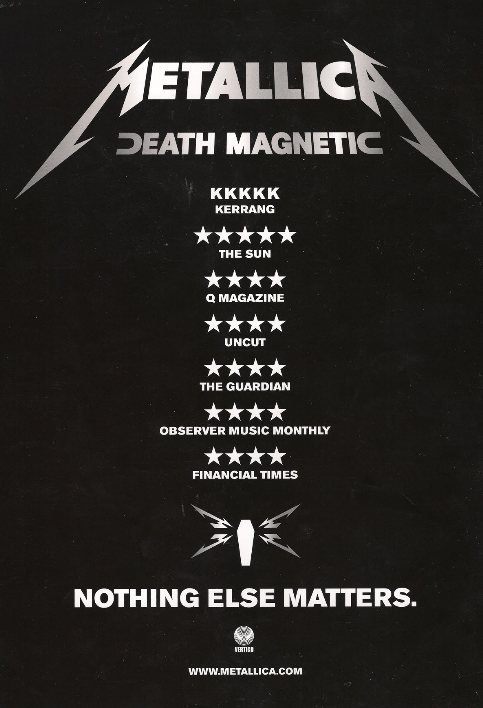
Challenges of magazine advert forms and conventions
- We challenged the forms and conventions by including website links to social media pages as well as official website links. this is not something used on many magazine adverts but we felt that this should be used more to get a fan base growing for an artist so they can potentially sell more products in the future.
Evaluation - Question 1 (Kyle Quadra)
In what ways does your media products use, develop or challenge forms and conventions of real media products?
Music Video
Goodwin's Theory
1. Demonstrates genre characteristics
2. A distinct relationship between the lyrics and the visuals
3. A distinct relationship between the music and the visuals
4. Close-ups of the artist; used by the record label to market and advertise the artist
5. A reference to the notion of 'looking' or voyeurism
6. An intertextual reference
For our own music video, we tried to incorporate the key features from Goodwin's theory in order to produce a successful music video that is realistic and as similar to real music videos produced by record labels.
How our music video demonstrates Goodwin's Theory
- Set in Studios, Cities, Parks or woodland.
- Live Performance from the band, or singer.
- Usually Partnered with a narrative.
- Extreme Close-ups, Long-shots, Establishing and hand-held shots used.
- Costumes and make-up create the character and are dependent on the time and setting.
Conventions in relation to our products
- Our Music Video conforms to majority of the conventions of an Indie-Pop Music Video, for example being set in a central city; London as well as featuring parks, however not using a studio as a location.
The gif below shows a clip from a real Indie-Pop music video. The artist is seen looking out over the setting of a city in the introduction to the video.
This common convention found in many Indie-Pop music videos is carried over and used in our music video in multiple places. An example of this can be seen in the gif below, where the artist from our music video is seen looking out over the river Thames and the city of London.
This convention of the music video being set in a city, woodland or park is a common feature seen in most Indie-Pop music videos, as seen in the gif from the music video for the song 'Pompeii' by Bastille.
Our music video further adhered to this through the use of a park as one of our locations, as seen in the gif below.
- The performance in our music video was not live, and the artist is portrayed by an actor. The music video therefore does not conform to the convention of an Indie-Pop music video containing a live performance, as the real artist does not feature in the music video.
- It is a key convention of a Indie-Pop music to be linked with the narrative of the video. The song is clearly partnered with a narrative in the video, making our product conform to this convention. Through the analysis of the lyrics done prior to storyboarding and later filming, we identified the theme of a love story to which we attempted to produce in the narrative of the video. The song references his love for someone or something, and therefore the narrative had to be about someone he loved, i.e. his partner. The music video cuts between a previous date and the artist thinking back and remembering the experience, and this is done on the beat of the music therefore creating a relationship between the visuals and the music as seen in real music videos.
As the reference to the artist's love towards something or someone is left ambiguous, we decided to take the narrative further by attempting to show the artist's love of something more; his love for the city of London - shown through the establishing shots of London as well as the the wide-shots of the artist looking over the city.
This proved successful as from our audience feedback, we asked our audiences whether it was obvious or not, to which the agreed that there was a dual love story for both the couple and the artist and London.
- In relation to Goodwin's fourth key feature of a music video, our music video incorporates many long-shots and establishing shots of the various locations around London as well as a series of close-up shots on the actor portraying the artist. Seen below is an example of this from our music video.
This is an example of a close-up in a real music video.
It is useful to have close-ups of the artist in a music video as it provides the record label with a method of advertising the artist, giving the artist a brand identity as well as being a synergistic link between the song and other songs made by the artist.
Our music video does not contain any notions to voyeurism, challenging the conventions of a successful music video according to Goodwin, however conforming to the conventions of an Indie-Pop music video, which do not commonly refer to voyeurism.
- There are many intertextual references within our music video to real music videos. Some of these references would include;
The song title at the start of the video, mirrors that done in real music videos as seen below showing our opening compared to the opening of the music video for 'Someone New' by Hozier.
Overall we aimed to stay close to the conventions of real music videos, to make our video as authentic as possible by following Goodwin's key features. We conformed to these features by having a narrative to compliment the music, demonstrating characteristics of our genre through the video, making intertextual references to other music videos and using close-ups of the artist as a selling point. The only exception to Goodwin's features, is that we challenged the idea of voyeurism by not sexualising the female character in the video.
Digipak
Conventions of Digipak
- The artist's name.
- An image or logo of the artist.
- Song list, if the digipak is for an album which contains multiple songs.
- An insert or booklet with information about the music, artist or a poster.
Conventions in relation to our Digipak
- Following the conventions of a digipak, our digipak features the artist's name in bold on the front cover panel. It is often the artist's name which draws an audience to the single or album, which is why most digipaks display the artist's name in bold, usually being the dominant text on the front cover over the name of the album. We did not conform to this convention as audiences would be less familiar to our artist, therefore we placed the artist's name at the bottom of the digipak and made the title of the song the dominant text, as we believe that the track title would be what attracts an audience to the digipak.
- We did not use an image of the actual artist on our digipak (shown below), but instead used the actor who portrays the artist in the music video on the digipak. By doing this, we created a synergistic link between the print product and the music video which in turn would make the digipak more recognisable to audiences if they had previously seen the music video. This does not conform to the conventions of a real digipak as majority of digipaks have the real artist of the songs on the cover as well as rarely using images from the music video.
Stills taken from the music video for the digipak.
Whereas the cover of Rihanna's 'Good girl gone bad' does not use any images or themes from the music video for the song.
The only synergistic link between the music video and the digipak would be the artist Rihanna.
- We did not include a song list on our digipak seen below, challenging the conventions of most digipaks. The reason for this was because the digipak was made for a single, not an album. If we were to include a song list, it would only contain one song so to compensate for this, we decided to include some information about the artist and the single.
Examples of song lists found on real digipaks:
- The booklet found as an insert inside the digipak was the main feature of the print product. The booklet seen below, contained stills from the music video, again reinforcing a synergistic link between the print product and the music video. This is a common feature in real digipaks and therefore our product conforms to the conventions.
Examples of inserts from real digipaks:
Magazine Advert
Conventions of Magazine Adverts
- The artist's name.
- An image or logo of the artist.
- The album title.
- Reviews.
- Where to find the song.
Conventions in relation to our Magazine Advert
- Similar to our digipak, the artists name is featured on the magazine advert. It is much smaller in relation to the song title for the fact that the song title would be more recognisable to the audience. By doing this, we are challenging the conventions of popular magazine adverts by not having the artist name as the key aspect of the text on the advert.
- The reviews are a common feature on magazine adverts although not featured on all adverts. It promotes the song and can influence audiences to buy the track. To conform to this convention, we added reviews to the advert as well as starred ratings as seen below, similar to how a critique would rate a real song.
An example from a real magazine advert:
- The album title.
- Reviews.
- Where to find the song.
Conventions in relation to our Magazine Advert
- Similar to our digipak, the artists name is featured on the magazine advert. It is much smaller in relation to the song title for the fact that the song title would be more recognisable to the audience. By doing this, we are challenging the conventions of popular magazine adverts by not having the artist name as the key aspect of the text on the advert.
In the magazine advert above, the artist's name is clearly the most dominant text on the page, directing attention to the artist and therefore conforming to the conventions.
- The magazine advert uses the same still from the music video which is used for the digipak. This creates a synergistic link between both print products and the music video. The image of the real artist, like the digipak, is not used but instead the actor from the music video features on the poster therefore not conforming to the conventions of an advert for a magazine.
- The magazine advert, in the same way to the digipak, features the title of the song as the dominant text on the advert. This further adds to the continuity and synergy between all three products.
The titles are shown below; showing the magazine advert, digipak and music video.
The typeface is the same across all products.
- The reviews are a common feature on magazine adverts although not featured on all adverts. It promotes the song and can influence audiences to buy the track. To conform to this convention, we added reviews to the advert as well as starred ratings as seen below, similar to how a critique would rate a real song.
An example from a real magazine advert:
- Finally, we included links to find the song online; through iTunes and Google Play. This is not a very common convention to magazine adverts as adverts have been used for a much longer time, before songs were available online digitally, but is used in some newer adverts as shown below.
Overall we attempted to stick to the conventions of digipaks and magazine adverts in order to produce products which are authentic and similar to real print products.
Subscribe to:
Comments (Atom)

























